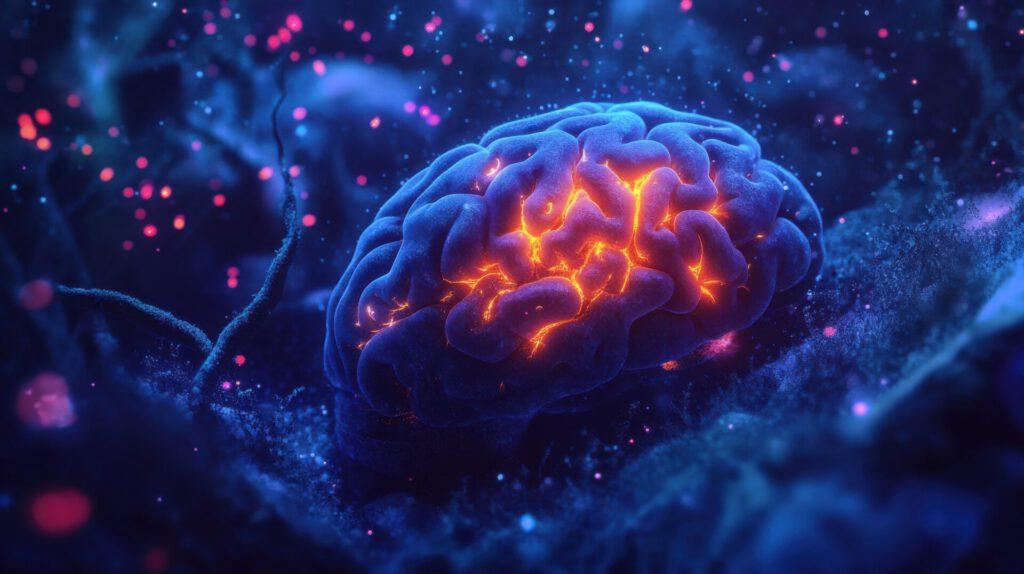Latest Findings on the Causes of ME/CFS

Lipkin study: In ME/CFS, the immune system reacts to stress as if it were an infection
Brief summary
One of the largest studies on ME/CFS to date provides new insights. The immune system of affected individuals is noticeably active even at rest, but the decisive malfunction is particularly evident after physical exertion. Even minor efforts trigger excessive inflammatory reactions and energy stress in the cells.
Over 200 people were examined. The diagnosis was made according to CCC and Fukuda criteria. Blood samples were analyzed at rest, immediately after an exercise test, and 24 and 72 hours later.
Inflammation as a permanent state
Even at rest, a large number of elevated cytokines were found in the blood of ME/CFS patients. Cytokines are small messenger substances of the immune system that control inflammatory reactions. In the study, IL-1β, IL-2, IL-6, IL-8, IL-17, TNF-α, and IFN-γ, among others, were significantly elevated. An evaluation model described this pattern as “screams baseline immune activation,” i.e., as an immune profile that literally screams for chronic activation (Che et al., 2025; Johnson, 2025).
When the isolated immune cells were additionally confronted with bacterial or viral stimuli, they reacted excessively. The reaction was particularly strong in post-menopausal women. In an interview with David Tuller, Lipkin attributed this to the influence of estrogen, which normally has a dampening effect. With decreasing levels, the immune cells apparently lose an important brake and respond even more aggressively to stimuli (Tuller/Lipkin, 2025).
Another connection results from intestinal research. Lipkin’s group had previously shown that people with ME/CFS have fewer types of bacteria that produce butyrate. Butyrate is a short-chain fatty acid that protects the intestinal mucosa on the one hand and inhibits excessive inflammation on the other. If this protective molecule is missing, the intestinal barrier becomes more permeable and microbial products can enter the blood more easily. There, they encounter an immune system that is already overactivated, with consequences such as flu-like malaise, cognitive impairments, and post-exertional malaise (Tuller/Lipkin, 2025).
This permanent activation is consistent with initial findings from brain research. Prof. Jarred Younger was able to show in a (at that time) still unpublished PET study that immune cells in the brains of ME/CFS patients are noticeably active. #MillionsMissing Germany 2025 has already reported on this. The Lipkin study now complements this finding with clear blood data that make systemic inflammation visible (MillionsMissing, Neuroinflammation, 2025).
Energy blockade
The study clearly shows that the cells of people with ME/CFS do not switch to the normal training mode during physical exertion. Normally, muscle cells resort to various energy sources: first sugar, then increasingly fats. In ME/CFS, this change does not succeed.
Citrate and phosphates: Instead of being used in the muscle cells for ATP production, they accumulate in the blood after exertion. This indicates a disturbance in energy metabolism.
GDF15: This signaling protein increased significantly in ME/CFS. GDF15 is a marker for mitochondrial stress. Mitochondria not only produce energy in the form of ATP, they also control central processes of antiviral defense. If they are overloaded, not only does energy production break down, but also the ability to control infections and inflammation.
Carnitine and fatty acids: In healthy people, carnitine increases after exertion to transport fats into the mitochondria. In ME/CFS, it decreased, and the fats were hardly used.
The result is metabolic inflexibility. The metabolism remains stuck in a kind of blockade instead of flexibly switching between sugar and fat burning.
For those affected, this means that even minor exertion can trigger a cascade of symptoms that goes far beyond fatigue. Typical are aggravated pain, cognitive decline, flu-like malaise, or neurological disorders. It is precisely this delayed and multi-layered reaction that defines Post-Exertional Malaise (PEM). It distinguishes ME/CFS from other chronic diseases and is a central diagnostic criterion. For experts, this finding is significant because it shows that PEM can be explained by measurable disturbances in energy metabolism and is not due to a lack of fitness (Che et al., 2025; Johnson, 2025).
Liver in emergency program
The Lipkin study shows that the liver in ME/CFS is also forced into a kind of emergency program. Normally, it balances between two central tasks: providing energy and breaking down toxins. In those affected, the focus was clearly on detoxification.
Glucuronic acid: This marker was already elevated at rest and remained high even after exertion. Glucuronic acid is produced when the liver tries to bind and excrete foreign substances and metabolic waste products. High levels indicate that the body is constantly fighting oxidative stress and potentially harmful molecules.
Metabolic inflexibility: Instead of flexibly switching from “detoxification” to “energy production,” the liver remains trapped in defense mode. This deprives it of energy that would be needed for regeneration and coping with stress.
For those affected, this means that the body is already under severe strain in its initial state. If additional demands are then added through exercise or stress, there is hardly any energy available for muscles and brain. This can increase the severity and duration of post-exertional malaise.
For research, this finding is particularly exciting because it shows that not only muscles and the immune system, but also central metabolic organs such as the liver are permanently under pressure. This moves ME/CFS even more clearly into the ranks of diseases in which a misguided balance between energy and stress reactions shapes the clinical picture (Che et al., 2025; Johnson, 2025).
Complement system and mast cells
Another central finding concerns the complement system, a part of the innate immune defense. It is normally responsible for quickly recognizing and fighting pathogens. However, the Lipkin study showed that this system is excessively activated in ME/CFS after exertion.
Complement factors: After exertion, elevated levels of C1R and CFHR4 were found. Both proteins indicate that the complement system is activated, even without an acute infection.
Consequences: Overactivation can activate mast cells. Mast cells release histamine and other messenger substances that contribute to inflammation, tissue damage, pain, and cognitive impairment.
Comparison with earlier studies: Years ago, a CDC study had already described similar findings and suggested that the complement system might be responsible for the “inflammatory component” of PEM. The new data impressively confirm this hypothesis.
For those affected, this can be translated as follows: A normal training session or even everyday stress is treated by the body like an infection. The excessive activation leads to symptoms such as flu-like malaise, pain, or brain fog.
For experts, the data are significant because they show that ME/CFS is not an unspecific overload, but a misguided immune reaction that can be directly measured. Interestingly, more recent reviews also suggest similar mechanisms for Long COVID, which underscores the relevance of these findings beyond ME/CFS (Che et al., 2025; Johnson, 2025).
Oxidative stress
The Lipkin study shows that people with ME/CFS suffer particularly strongly from oxidative stress. This refers to an imbalance between harmful oxygen radicals and the body’s own protective systems.
Copper-dependent enzymes: After exertion, enzymes such as AOC2 and CUTC increased significantly in the ME/CFS group. Both are part of copper-dependent reaction pathways that are activated when the formation of free radicals increases.
Consequences: Free radicals can directly damage cell membranes, proteins, and mitochondria. If the body’s own defense systems are overloaded, a vicious cycle of inflammation, mitochondrial stress, and further radical formation occurs.
For those affected, this means that even minor efforts can set in motion a cascade that affects many body systems simultaneously. Typical consequences are cognitive deterioration, flu-like malaise, or increased sensitivity to stimuli. All of these are characteristics of Post-Exertional Malaise.
Clinical significance and consequences
The results of the Lipkin study are relevant not only for research, but also for clinical practice.
Diagnostics: Several markers such as GDF15, citrate, or complement factors could help to objectively record PEM in the future. This is significant because the diagnosis has so far been based almost exclusively on symptom reports.
Understanding PEM: The study shows that PEM is not a subjective overload, but the result of measurable biological malfunctions. This makes it clear that the core symptomatology of ME/CFS has a physiological basis.
Research perspective: The multitude of biomarkers opens up the possibility of identifying subgroups of affected individuals and developing specific therapeutic approaches.
For physicians, it is crucial to recognize that physical exertion in ME/CFS triggers pathological processes that can be proven by laboratory values. For those affected, this means that their experiences are becoming increasingly scientifically explainable and medically recognized (Che et al., 2025; Johnson, 2025).
